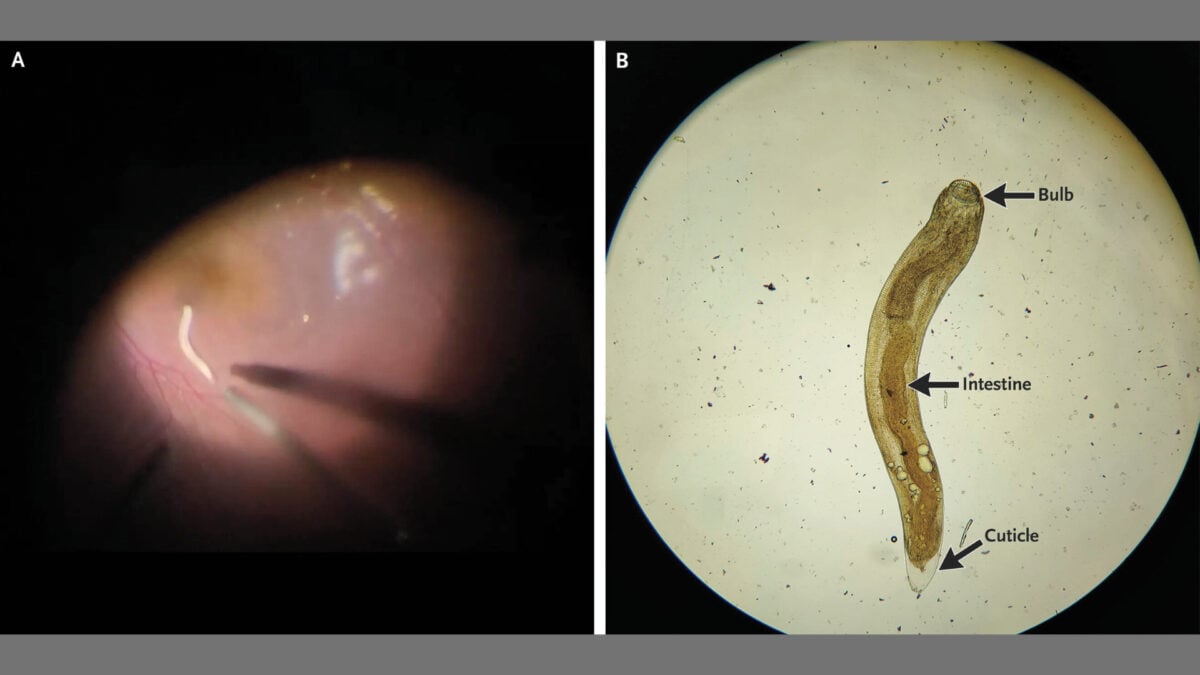A Man's Eye Got Infested by a Worm, so Doctors Vacuumed Out the Eye Juices

Here’s something to remind you that things could always be worse. A case study this month documents a man whose eye became infested with a parasitic worm.
Doctors in India detailed the real-life body horror tale in the New England Journal of Medicine last week. The man was afflicted by a parasitic roundworm typically found in cats and dogs. What’s worse, in order to retrieve the worm, the doctors had to literally suck out the man’s eye juices.
According to the NEJM report, the 35-year-old man had been dealing with eight months of redness and blurry vision in his left eye before he visited a local ophthalmology clinic. The doctors’ physical examination soon showed extensive inflammation in the eye, while a closer look revealed a squiggly worm “moving sluggishly” in the back.
The doctors removed the worm via a pars plana vitrectomy, a procedure in which the eye’s internal jelly-like vitreous humor is siphoned out. Once the worm was outside the body, they identified it as Gnathostoma spinigerum, a parasitic nematode with a complex life cycle.
These worms are pooped out as eggs by carnivorous mammal hosts like cats. If they end up in freshwater, they hatch, and the larvae infect small crustaceans called copepods. If these copepods are eaten by suitable secondary hosts like certain fish or frogs, the larvae will continue to develop. And if these hosts are then eaten by a third definitive host like cats, the worms will fully mature, mate, and lay eggs ready to be pooped out all over again. (Sing it with me: “It’s the circle of life.”)
Humans (and other animals like ducks) are accidental dead-end hosts, however. If we eat infected and undercooked meat containing the worms, they’ll infect us but never become full adults. This infection is called gnathostomiasis, and it’s most common in areas of the world where raw fish is a common delicacy, including Japan, Thailand, and Mexico, according to the Centers for Disease Control and Prevention.
Once inside the human body, the worms can migrate just about anywhere and stir up trouble. Most infestations end up near the skin’s surface, which still isn’t a picnic (the worms can cause recurring bouts of swelling as they wiggle under the skin). They can also travel deeper into our organs, including the brain and eyes.
All things considered, the man was fortunate, since ocular gnathostomiasis can cause vision loss. He was given a course of steroids to tamp down the eye inflammation, which did eventually resolve. But he didn’t escape unscathed either. His left eye’s vision still remained impaired (20/40 acuity) due to a cataract that was likely caused by the worm removal, since cataracts are the most common complication of a pars plana vitrectomy.








